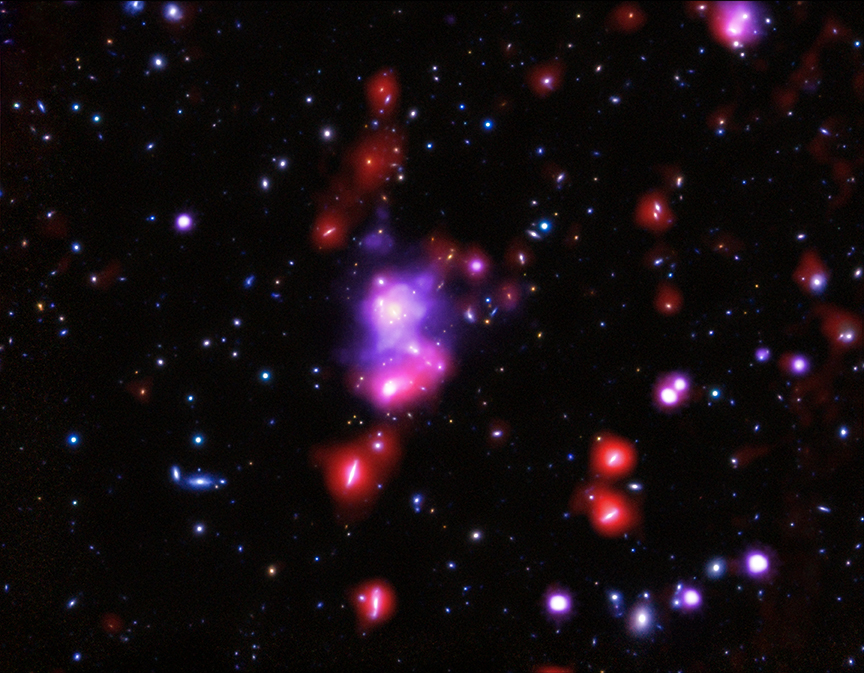
 Credit: X-ray: NASA/CXC/INAF/P.Tozzi, et al; Optical: NAOJ/Subaru and ESO/VLT; Infrared: ESA/Herschel
Credit: X-ray: NASA/CXC/INAF/P.Tozzi, et al; Optical: NAOJ/Subaru and ESO/VLT; Infrared: ESA/Herschel
The Earliest Jewel
Clusters of galaxies mark the cosmic web of matter which defines our material Universe. Understanding when and how these enormous cosmic structures formed is important for understanding how dark matter, galaxies, and stars came together to form the Universe as we know it today. A team of astronomers have now identified the most distant, most massive cluster of galaxies. This cluster, called XDCP J0044.0-2033 but dubbed "il Gioiello" (Italian for "jewel"), is an X-ray source originally discovered by the XMM-Newton telescope. Detailed, high spatial resolution follow-up X-ray observations with the Chandra X-ray telescope, along with ground-based optical and space-based infrared images, suggests that the total amount of matter in the cluster tops a whopping 400 trillion solar masses, and indicates that the cluster is 9.6 billion lightyears away. A composite image of the cluster is shown above, where the X-ray emitting gas seen by Chandra is shown in purple, infrared data from ESA's Herschel Space Telescope is shown in red, and optical data from the Subaru telescope and the ESO Very Large Telescope are shown in red, green, and blue.
The identification of a massive distant cluster like "il Gioiella" means that very massive structures formed when the Universe was only about 4 billion years old. The discovery of il Gioiello, and a similar observation of the distant "el Gordo" cluster (which is slightly less massive than il Gioiello) has caused astronomers to begin to re-think how such massive clusters could have formed so early in the Universe's history.
Published: December 22, 2014
<
HEA Dictionary ● Archive
● Search HEAPOW
● Other Languages
● HEAPOW on Facebook
● Download all Images
● Education ● HEAD
>

Each week the HEASARC
brings you new, exciting and beautiful images from X-ray and Gamma ray
astronomy. Check back each week and be sure to check out the HEAPOW archive!
Page Author: Dr. Michael F. Corcoran
Last modified Monday, 26-Feb-2024 17:35:27 EST


